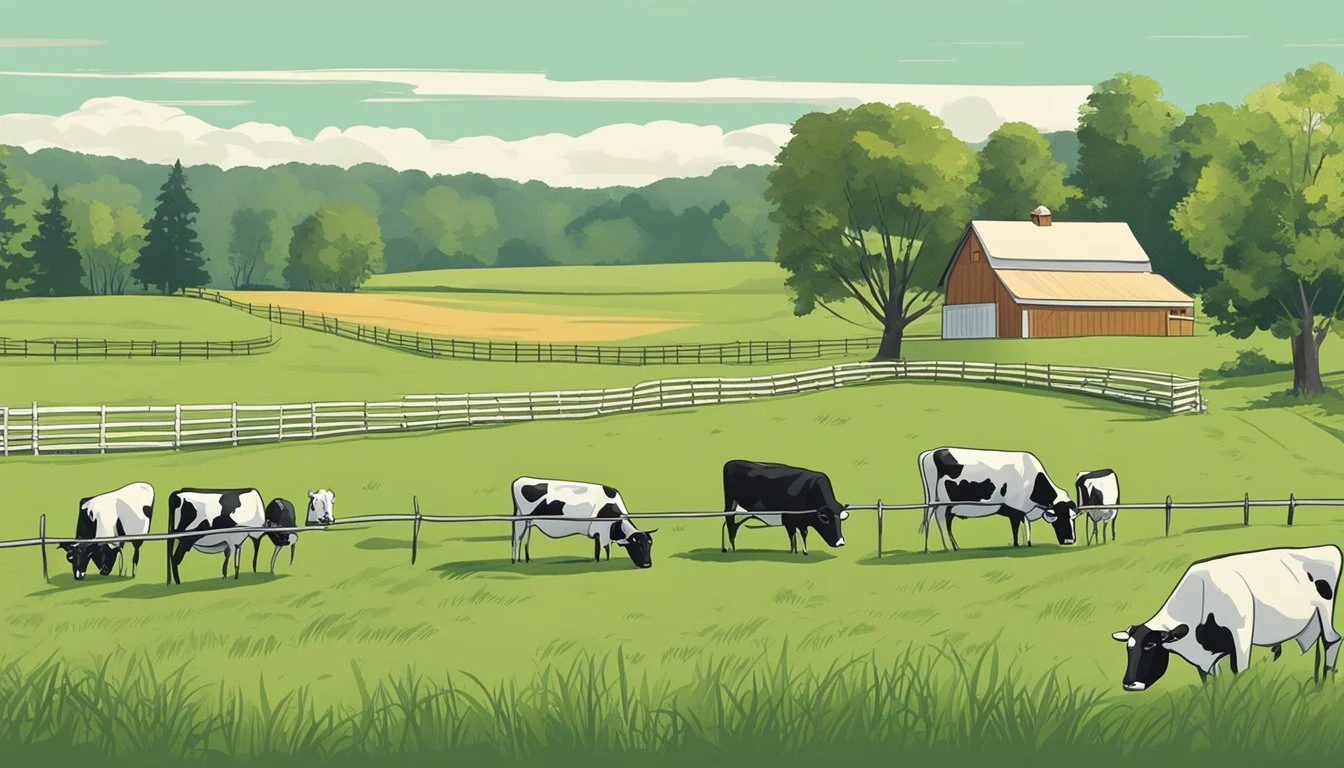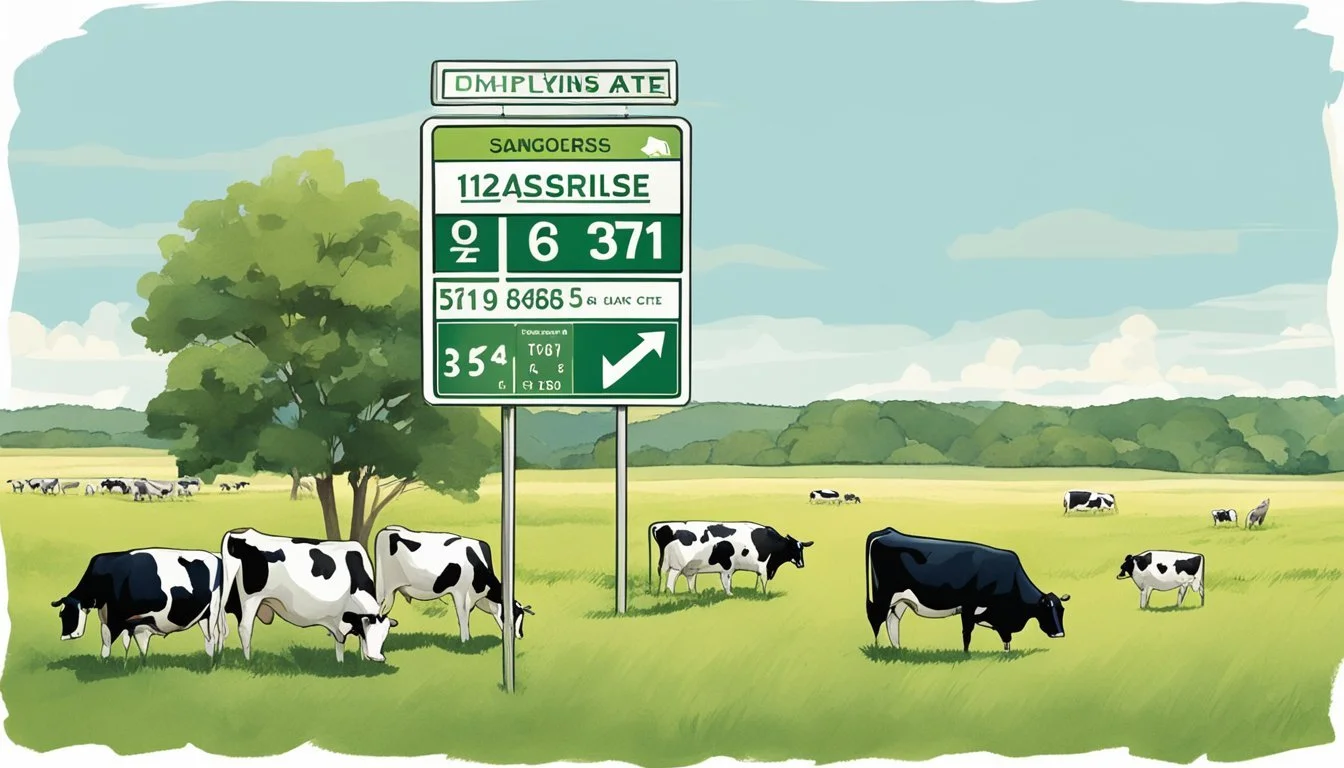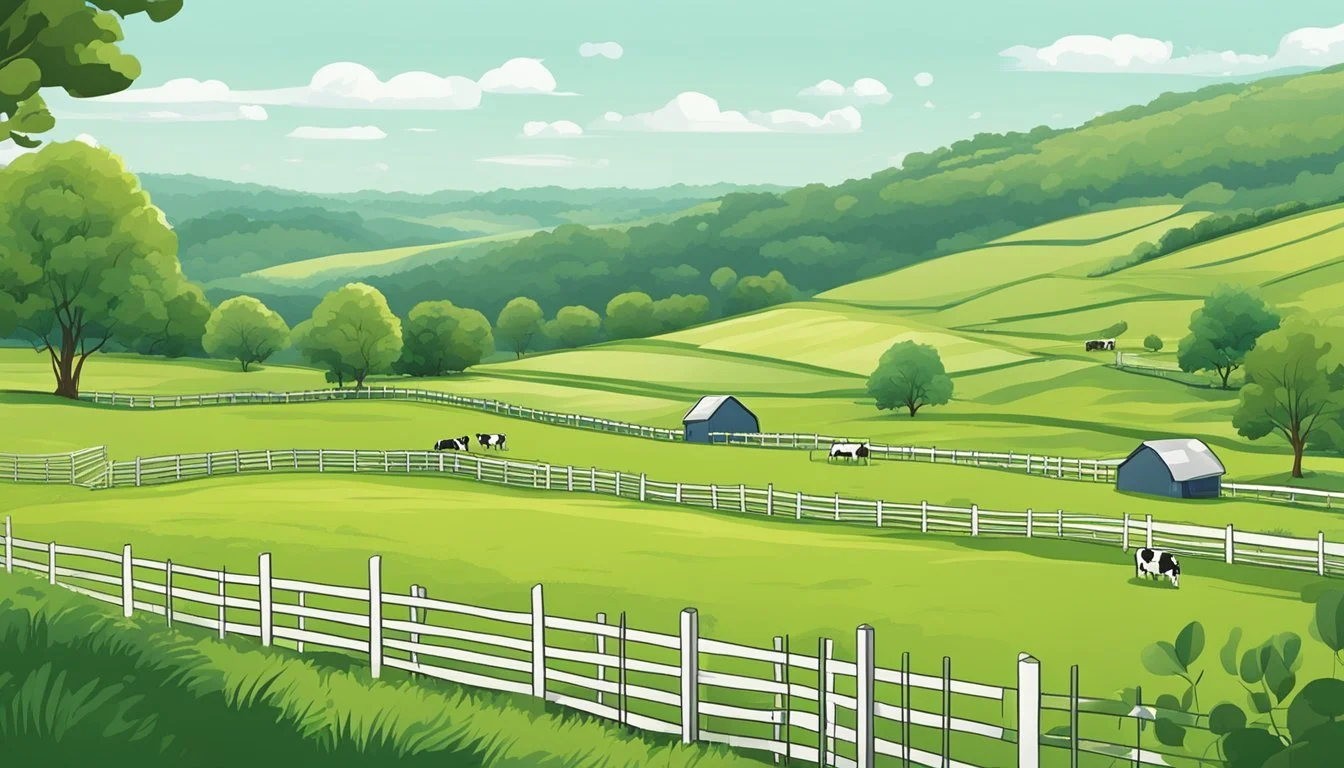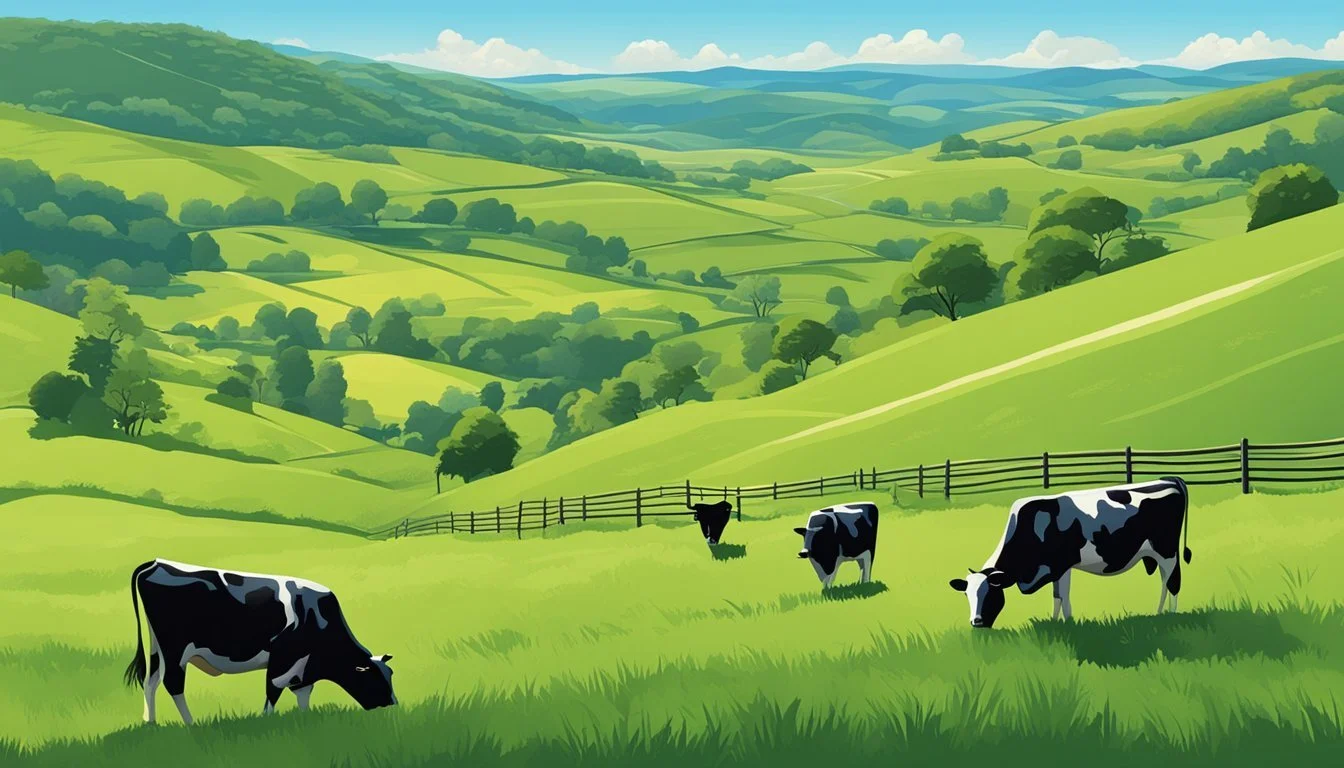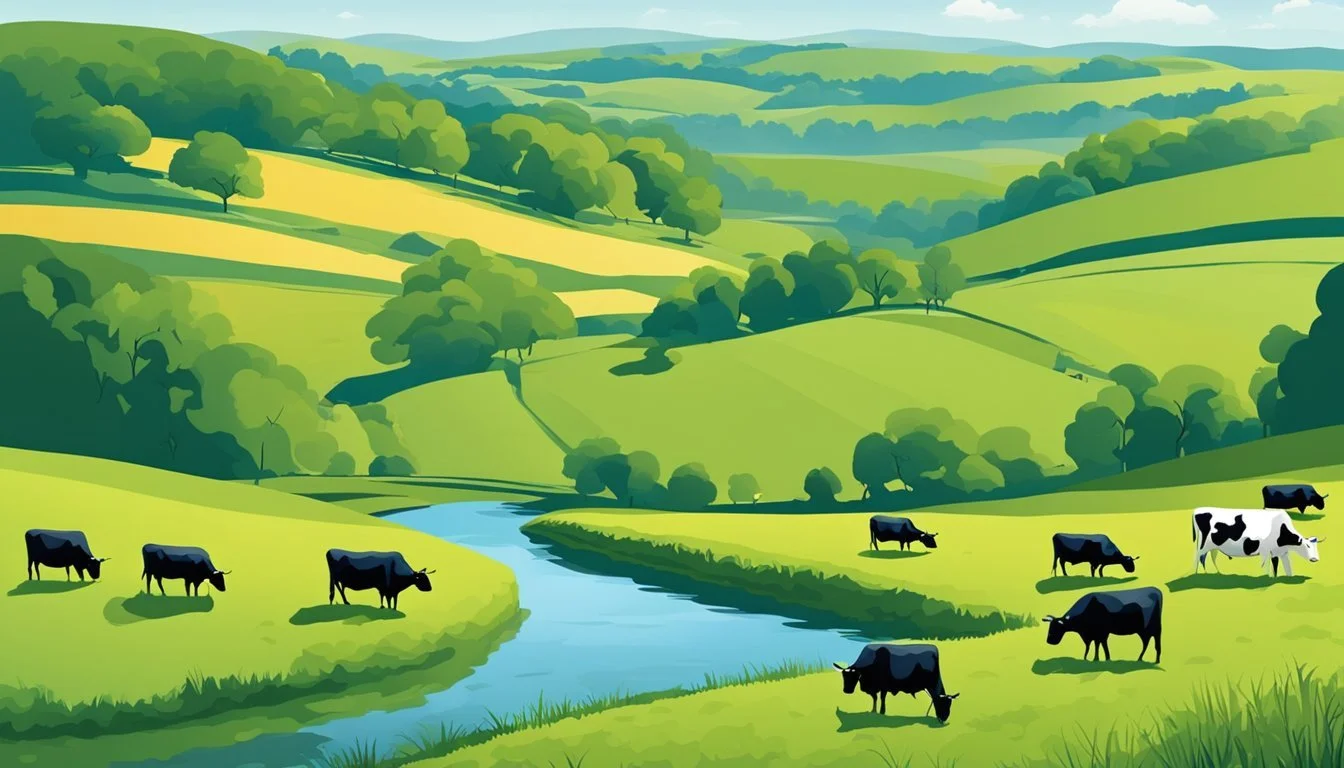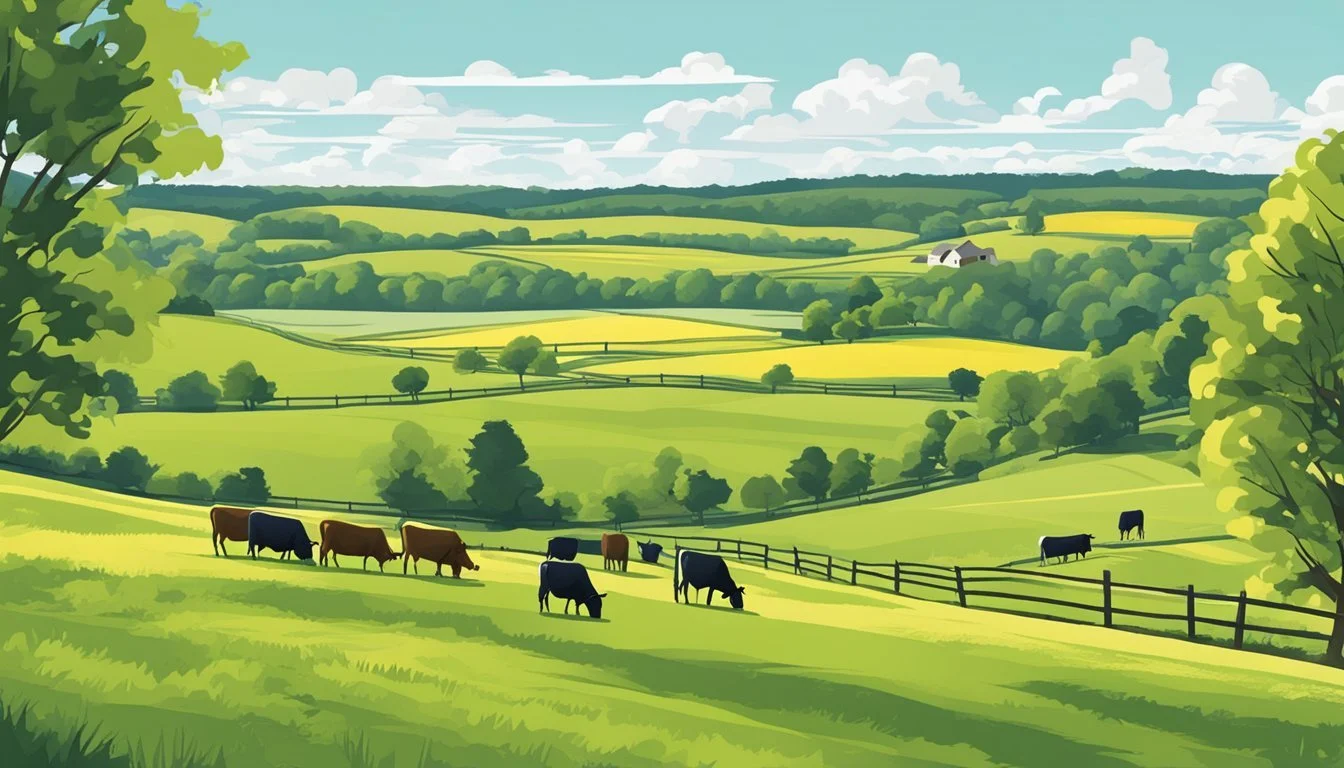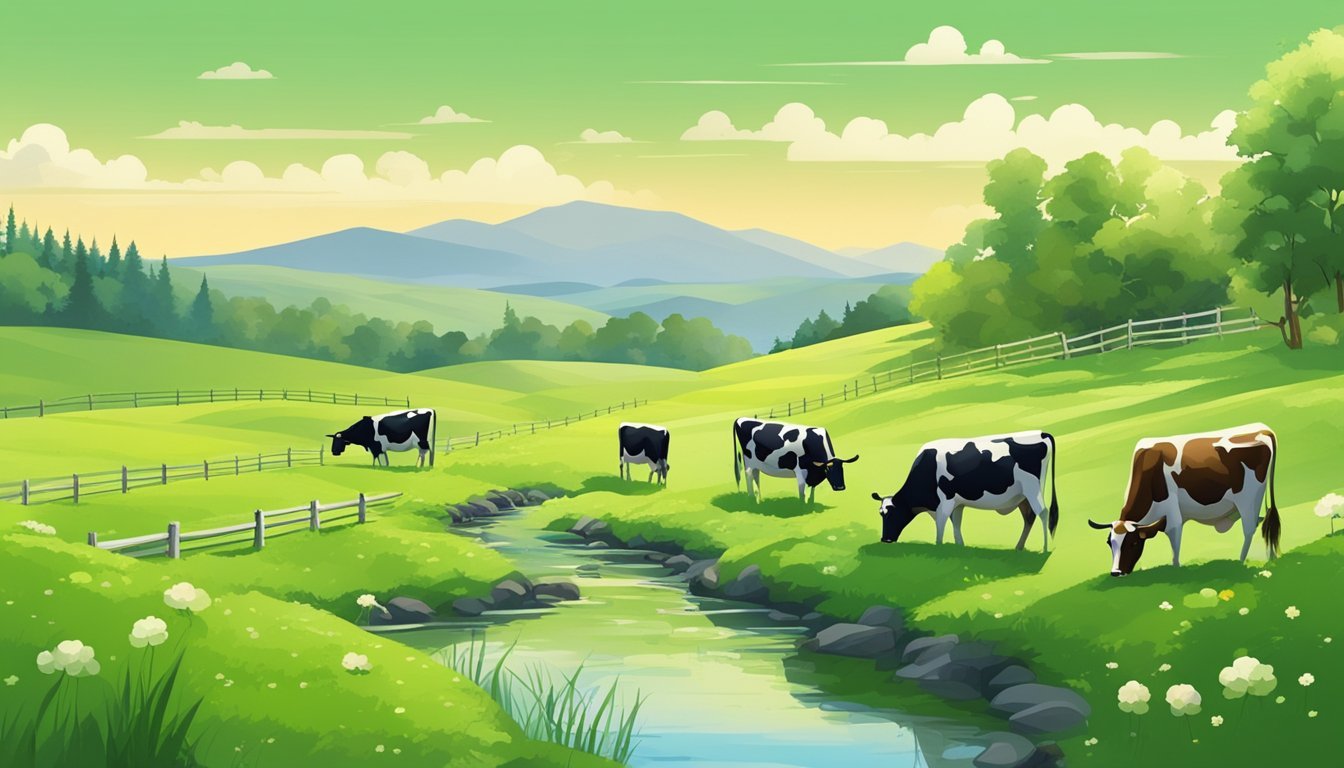Stocking Rate Wisconsin
Determining Optimal Cows Per Acre for Your Land
Determining the appropriate stocking rate for pastures in Wisconsin involves several factors, including the type of cows being raised, the quality of forage available, and the size and characteristics of the property. Stocking rate, defined as the number of cows per acre that a land can support without degrading the soil or plant resources, is a crucial consideration for sustainable livestock management. In Wisconsin, where the climate and soil conditions can vary widely, estimating the correct number of cows per acre is key to maintaining both animal health and environmental balance.
Specific to the area, Wisconsin's pastures typically sustain different stocking rates compared to arid or semi-arid regions due to its relatively abundant rainfall and fertile soils, which often result in more productive grasslands. Nevertheless, property support for livestock also depends on the management practices in place, such as rotation and grazing intensity, which can directly impact the sustainability and efficiency of the land's use. Wisconsin farmers must carefully assess their individual circumstances to optimize their stocking rates and ensure that their property can support their herd both in the short term and for the long-term viability of their farming operations.
Understanding Stocking Rate
In the context of livestock management, the success of a property's grazing system hinges on its ability to establish an optimal stocking rate. This determines not only the health and productivity of the land but also the well-being and performance of the cattle.
The Concept of Stocking Rate
The idea of stocking rate involves a balance between the number of cattle on the land and the amount of forage available. It is essentially the amount of land allocated per animal unit (AU) for a specific time period. An animal unit is a standard used to compare different types of livestock based on forage needs, commonly equating to a 1,000-pound cow.
Calculating Stocking Rate
To calculate stocking rate, you can use the following formula:
[ \text{Stocking Rate (AUs per acre)} = \frac{\text{Total Land Area (acres)}}{[\text{Number of AUs} \times \text{Grazing Duration (months)}]} ]
For an operation with 50 cows each considered as 1 AU, grazing on 200 acres for 12 months:
[ \text{Stocking Rate} = \frac{200}{(50 \times 12)} \approx 0.33 \text{ AU per month per acre} ]
This equates to approximately 4 acres required per AU in a year (AUY).
Stocking Rate Versus Carrying Capacity
While stocking rate indicates how many livestock the area can support at a given time, carrying capacity reflects the maximum stocking density that the land can support sustainably over time without degradation. It is essential to differentiate these terms as carrying capacity will ultimately dictate the upper limit on the number of cattle an acreage can support over time. Thus, a farmer in Wisconsin should consider both the stocking rate and the carrying capacity to ensure the land can support their cows year after year.
Pasture Management in Wisconsin
Successful pasture management in Wisconsin hinges on understanding the diverse climate conditions and soil types, prioritizing forage production and quality, and implementing regular maintenance practices to support a healthy pasture ecosystem.
Climate Influence on Pasture
Wisconsin's climate varies from cold, harsh winters to warm summers. These seasonal extremes affect pasture productivity and grazing patterns. Farmers must adapt to a shorter grazing season by carefully planning forage availability to prevent overgrazing, which can lead to land degradation. The use of cool-season grasses and legumes can optimize forage during temperature shifts in spring and fall.
Soil Quality and Fertility
Soil quality in Wisconsin is generally rich, but varies by region. Proper soil testing is essential to determine nutrient levels and soil fertility, which are critical for high-quality forage production. Farmers may need to apply supplements like nitrogen, phosphorus, or potassium to maintain optimum fertility levels, especially when cultivating demanding crops like alfalfa.
Forage Production and Quality
Forage quality in Wisconsin pastures is typically high, due to a beneficial mix of grasses and legumes adapted to the local climate. This combination supports forage production through summer and into fall. Implementing rotational grazing helps maintain pasture health and allows for consistent regrowth of vegetation.
High-quality forage: alfalfa, clovers, ryegrass
Supplemental forages: corn silage, hay when needed
Pasture Health and Maintenance
Maintaining pasture health involves regular monitoring of pasture inventory and understanding pasture carrying capacity. Overgrazing can lead to a degraded pasture, so stocking rates should reflect land capability. In Wisconsin, the stocking rate normally ranges from one acre per cow to allow for adequate grazing during the growing season and to prevent soil compaction and erosion.
By focusing on each of these aspects, farmers can ensure their pasture land remains productive and supports a sustainable stocking rate.
Grazing Strategies
Strategic grazing management is crucial to maximize forage utilization and maintain animal health. This section explores different grazing methodologies and how to establish a systematic approach to grazing on your Wisconsin property. Each grazing method has its benefits and drawbacks, and the effectiveness of a grazing plan largely depends on factors such as pasture size, herd size, and local climate conditions.
Rotational Grazing Fundamentals
Rotational grazing involves dividing pasture land into smaller areas, known as paddocks, and moving livestock between them to allow forage plants to recover after grazing. This method enhances pasture growth and can support higher stocking rates compared to continuous grazing.
Benefits:
Optimizes forage use: Helps to even out forage consumption and can increase total forage production.
Improves animal health: Livestock tend to feed on variety and maintain a better diet.
Implementation:
Paddock Design: Paddocks should be designed to provide adequate forage for the number of cows and the desired time period.
Recovery Periods: Allow adequate time for pastures to recover before re-grazing.
Continuous Grazing Pros and Cons
Continuous grazing is a method where livestock have unrestricted access to graze on a single pasture for the entire grazing season. It requires less labor than rotational grazing but often leads to overgrazing and uneven use of forage.
Pros:
Simplicity: Easier to manage without the need for moving livestock or managing fencing systems.
Lower initial cost: Fewer infrastructural requirements compared to rotational systems.
Cons:
Risk of overgrazing: Without recovery periods, forage is susceptible to damage and depletion.
Reduced pasture productivity: May result in a decline in forage quality and quantity over time.
Creating an Effective Grazing Plan
An effective grazing plan tailors grazing methods to the property's specific needs while considering local climate conditions and forage growth rates. Key components of the plan should address forage demand, stocking density, and schedule for rotation.
Stocking Rates: Wisconsin data suggests smaller beef farms use two to three acres per cow, while larger farms may require less than one acre per cow.
Season Length: It's essential to account for the local grazing season length, which impacts forage availability and stocking density.
Forage Availability: Regularly assess forage quality and quantity to adjust the stocking rate accordingly, ensuring sustainable grazing.
By understanding and applying the principles of rotational and continuous grazing, along with implementing a well-thought-out grazing plan, Wisconsin farmers can make informed decisions to support a productive and sustainable grazing system.
Livestock Nutrition and Feed
This section focuses on the dietary management necessary to optimize cattle health and productivity for property owners in Wisconsin.
Nutritional Needs of Cattle
Cattle require a balanced diet that includes water, energy, protein, vitamins, and minerals to meet their nutritional requirements. The specific needs vary based on the cattle's age, weight, breed, and stage of production. For instance, lactating cows necessitate a higher intake of nutrients compared to non-lactating ones.
Forage Utilization and Supplements
Effective forage utilization is critical to prevent overgrazing and ensure the pasture's sustainability. When natural forages fall short in nutritional content, supplements can compensate for deficiencies. Cattle may benefit from supplementation with:
Hay, particularly during Wisconsin's winter months
Silage, which can provide additional energy and palatability
Protein blocks or meals when forage protein levels are insufficient
Balancing Diet with Pasture Availability
In Wisconsin, balancing a cattle herd's diet depends heavily on pasture availability and its nutritive value throughout the seasons. Property owners must regulate stocking rates to avoid overgrazing, which can compromise both cattle health and forage regrowth. If the pasture cannot meet the cattle's needs, additional feed and silage may be necessary.
Maintaining a structured feeding program that accounts for changing nutritional needs and environmental conditions is a cornerstone for any successful cattle operation.
Efficiency and Profitability
To maximize efficiency and profitability in Wisconsin, ranchers must meticulously manage stocking density, adapt management strategies throughout the grazing season, and align operations with the ever-changing dynamics of cattle farming.
Optimizing Livestock Density
Optimal livestock density is crucial for maintaining pasture health and ensuring that cattle have enough forage throughout the grazing season. Wisconsin cows, on average, contribute a significant amount to the nation's milk supply, indicating that dairy operations need to balance high-density farming with efficient land use to remain productive. Effective grazing management strategies can help determine the right balance between the number of cows and the acreage available. Grazing management is especially critical as it affects both the quality of meat and the longevity of the pasture lands.
Financial Implications of Stocking Decisions
The financial success of a farming operation in Wisconsin is directly tied to stocking decisions. Operations with an overstocked density may incur higher feed costs and reduced meat quality, while understocking can result in underutilized resources. For instance, financial implications extend beyond feed costs to include the broader spectrum of inputs such as labor, veterinary care, and infrastructure maintenance, all of which are part of the delicate balance a rancher must maintain to run a profitable cattle farming business.
Maximizing Profit with Effective Management
Profit maximization derives from a synergistic approach to farming operation practices. This not only involves the practical aspects of stocking density but also spans to broader operational considerations, such as when to market cattle, how to optimize meat yields, and the timing of breeding cycles. Effective management strategies must integrate with the natural cycles of the land and cattle to draw maximum profitability from the operation. Comprehensive grazing management can reduce costs, improve meat quality, and potentially improve soil health, benefiting the farm in the long term.
Environmental Considerations
When considering the stocking rate in Wisconsin, it is crucial to understand the environmental implications of grazing practices. Specific factors such as overgrazing and drought can significantly impact land health and productivity, guiding the need for sustainable grazing methods.
Impact of Overgrazing on Land
Overgrazing occurs when plants are exposed to intensive grazing for extended periods without sufficient recovery time, leading to soil degradation and reduced plant growth. The environmental impact is substantial, resulting in:
Erosion: Loss of topsoil reduces the land's fertility and ability to support vegetation.
Water cycle disruption: Compacted soil from overgrazing decreases water infiltration, leading to altered hydrological dynamics and increased runoff.
Best Practices for Sustainable Grazing
Sustainable grazing involves practices that maintain or improve productivity, biodiversity, and ecological processes. Key practices include:
Rotational Grazing: Moving livestock between pastures to allow vegetation recovery.
Stocking Rates Adjustment: Matching the number of cows per acre with the land's carrying capacity to prevent overuse.
Dealing with Drought and Adverse Conditions
Drought resilience is critical in Wisconsin's variable climate. Adaptation strategies include:
Forage Management: Preserving native vegetation resistant to drought.
Supplemental Feeding: Providing additional feed during periods of forage scarcity.
Implementing these practices will help mitigate the grazing impact and sustain the health of agricultural lands under changing environmental conditions.
Legal and Advisory Framework
When considering the stocking rate on Wisconsin properties, it's crucial to adhere to a legal and regulatory framework that ensures sustainable land management and livestock health. Local regulations provide specific guidelines, while the NRCS plays a supportive role offering conservation planning resources.
Understanding Local Regulations
In Wisconsin, landowners must observe legal zoning laws and adhere to county-level regulations that dictate livestock operations. These regulations encompass aspects like stocking rate, which directly aligns with land capacity and management strategies for pasture upkeep. It's essential for landowners to inquire with local authorities to acquire necessary pasture permits and understand any restrictions or requirements regarding their property to maintain compliance with the law.
Check with local county zoning office for property-specific regulations.
Adhere to legal mandates covering environmental and livestock welfare considerations.
Role of the NRCS and Conservation Planning
The National Resources Conservation Service (NRCS), an agency of the USDA, provides technical assistance and tools to landowners looking to optimize stocking rates while promoting sustainable agriculture. Through conservation planning, the NRCS offers guidance on efficient land management practices that support both livestock productivity and environmental stewardship.
Utilize NRCS conservation plans to determine optimal stocking rates.
Implement management strategies with NRCS support to achieve balance between livestock needs and resource conservation.
By engaging with these entities and adhering to the established legal framework, Wisconsin landowners can maintain a successful, sustainable grazing operation that supports long-term productivity and land health.
Appendix
The Appendix provides a dedicated space for readers seeking specific information on cattle breeds well-suited for Wisconsin's climate, a glossary of key terms relevant to cattle farming and grazing, and a compendium of additional resources for comprehensive understanding.
Cattle Breeds Suitable for Wisconsin
Wisconsin's climate is conducive to a range of cattle breeds. Here are two prominent examples:
Angus: Recognized for its beef quality, Angus cattle fare well in Wisconsin. They adapt to the cold well due to their origin in the Scottish highlands.
Hereford: Known for its hardiness and grazing efficiency, the Hereford breed is another popular choice among Wisconsin beef producers.
Dairy Cattle: It's important to note that Wisconsin is famous for dairy, and breeds like Holstein dominate this sector. They are prized for their milk production and capability to thrive in the Wisconsin climate.
Glossary of Terms
A brief glossary for clarity on industry-specific terminology:
Beef: This term refers to the meat sourced from cattle.
Milk: A nutritious liquid produced by dairy cows, essential in the dairy industry.
Stocking Rate: A measure of the number of cows that can be sustainably grazed per acre on a property.
Further Reading and Resources
For those seeking more detailed information:
Wisconsin Extension Services: Provides extensive guides on livestock management.
USDA Resources: Offers a wealth of research on agricultural practices including cattle farming.
Local Farming Associations: Regional associations can be invaluable for tailored advice and networking.
Each source is an essential tool for anyone looking to optimize their cattle operation in Wisconsin.
Conclusion
When determining the stocking rate for pasture land in Wisconsin, multiple factors need to be considered to ensure optimal use of land and resources. The type of pasture, local climate conditions, and land fertility substantially influence the capacity of land to support livestock. In Wisconsin, where grazing pastures vary widely, a tailored approach to each property is essential.
A key takeaway is that there isn't a one-size-fits-all answer, as the stocking rate can fluctuate. However, informed estimates guide landowners toward sustainable grazing practices. For example, the Southern Plains require significantly more land per beef cow compared to the Northeast due to differences in climate and forage productivity. On average, regions with more efficient grazing like the Northeast require about 1.5 acres per cow. The specific conditions in Wisconsin, which can be similar to those in the Northeast, may allow for similar stocking rates, though individual assessments are essential.
Furthermore, it is crucial to adjust stocking rates based on real-time monitoring of pasture conditions and livestock needs. This maintains the balance between forage supply and demand, preventing overgrazing and ensuring the longevity and health of the pasture ecosystem.
Property owners are encouraged to seek local expertise to accurately assess their land's carrying capacity. This ensures that the results reflect Wisconsin's unique environment, leading to efficient and sustainable livestock production in the state.

